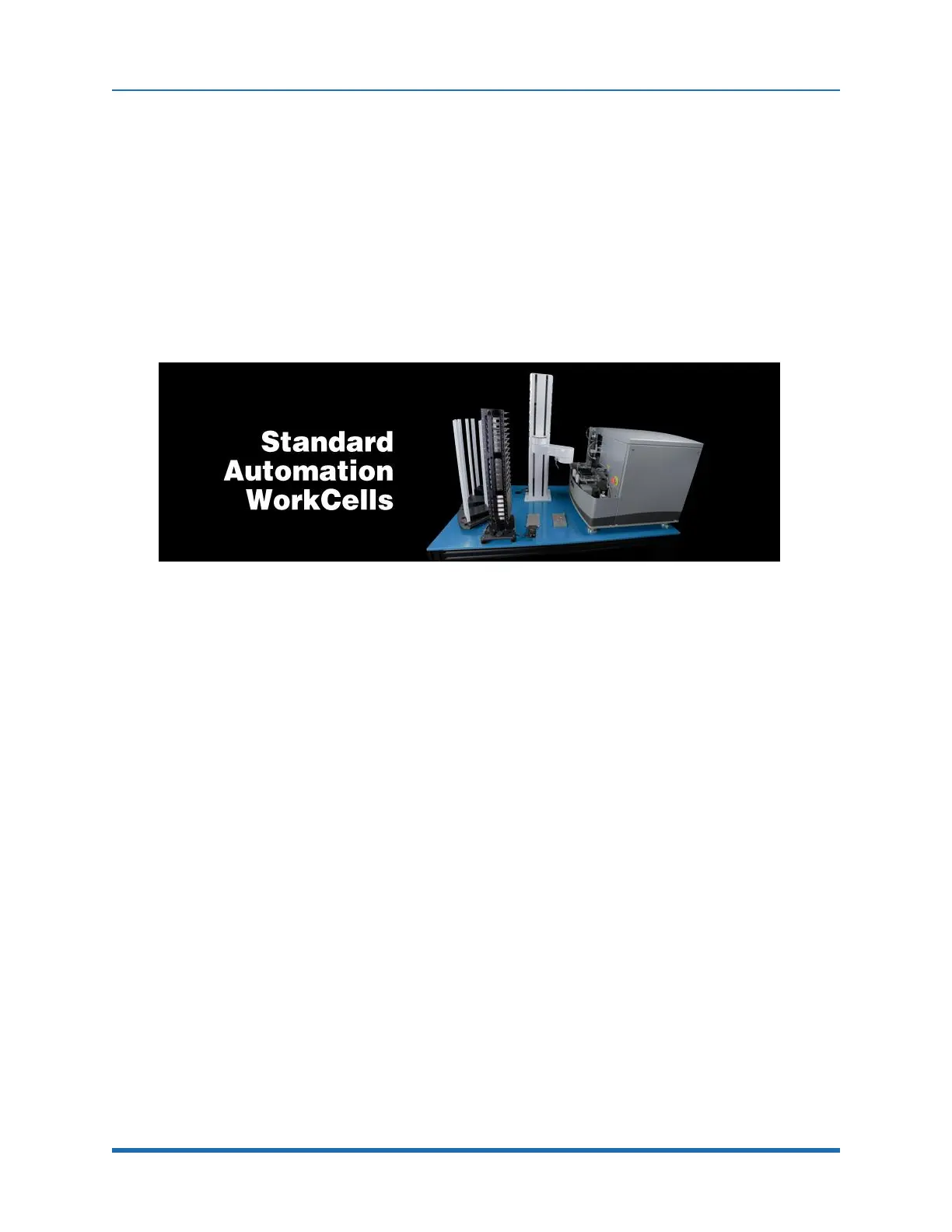Brooks Automation Appendices
Part Number: PF40-DI-00010 Rev. A Appendix F: Example Performance Level Evaluation
Appendix F: Example Performance Level Evaluation
Example Workcell Description
A PF400 Plate Handler moves 80 gram plastic trays from storage racks to an instrument and back
to the storage racks. Gripper is an electric parallel jaw gripper with maximum 23 N of gripping force
for plastic trays and is spring loaded so it will not drop trays if power fails. Robot motion is
programmed with approach point 50 mm above the instrument tray and final motion into instrument
is made at 50 mm/sec. Lowest storage rack position is 50 mm above table surface. See the
example workcell below in Figure 8-2.
Figure 8-2: Example PF400 Workcell, Courtesy of Biosero
Normal Operator Interaction with Robot
Teaching locations in workcell by hand guiding or teach pendant. Maximum robot forces under
manual control from PF400 Table 1 are 60 N. Pausing robot and removing racks from workcell with
no safety interlocks in workspace. Robot is stopped.
Possible Low Frequency (rare) Interaction with Robot
Untrained operator reaches into workcell while robot is moving and robot collides with operator.
Maximum free space collision force from PF400 Table 1 is 80 N. Untrained operator reaches into
workcell while robot is moving into instrument tray and hand is trapped between robot and
instrument tray. From PF400 Table 1 max trapping force in downwards Z direction at 50 mm/sec
(10% of max speed of 500 mm/sec) is 80 N. Performance Level: From the above, based on ISO
13849-1:2006:
S is S1, as possible operator collision forces will not injure operators.
F is F1 as normal operation does not involve collisions with robot.
P is P1 as the robot does not make unexpected motions.
So PL is “a”, and even a Category B controller is sufficient, given the low speeds and small possible
collisions forces involved which cannot injure an operator. (See 5.2.3 under EN/ISO 10218-1:2011).
Copyright © 2023, Brooks Automation
166
